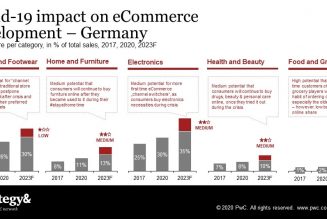Blue Prism is a global leader in intelligent enterprise automation. The company says it can transform the way work is done and accelerate the operational efficiency of organisations by “…making it easy for your people to automate the processes that matter most.”
The automation of processes is one of the cornerstones for the digital transformation of enterprises, because it eliminates the need for cumbersome legacy tasks, like paper-based communications, and allows organisations to focus on one of the real keys for success in the digital age – customer experience.
With this in mind, ITNA’s Luis Monzon had to opportunity to reach out to Greg Newton, Country Manager – South Africa at Blue Prism, to discuss how increasing business automation and focusing on customer experience can lead to your business’ successful digitalisation.
Here’s what transpired:
- Customer experience and flexibility of services is at the forefront of digital transformation. What should executives and business leaders keep in mind about customer experience when embarking on their journeys into digital transformation?
From a customer experience perspective, digital transformation needs to remove as much friction as possible for a customer when engaging with the company.
Many executives tend to think about digital transformation as the use of websites, portals, IVR, and chatbots that provide self-service channels to customers. A great customer experience is when a customer can engage with the company using whatever medium suits best at that time, whether that’s through the contact centre, branch, website etc., and get the same service whatever channel they use.
The experience should be seamless and consistent irrespective of the channel.
Executives need to focus on how they are using automation to get the most out of their existing systems and applications to deal with customer queries much quicker and more accurately.
Executives can do this by using intelligent automation to leverage the latest breed of artificial intelligence capabilities such as machine learning, natural language processing, and optical character recognition as part of their automation strategy. Once their existing systems, digital workers, and human employees are seamlessly integrated as best as possible, this is when businesses can begin to offer new business models and products to customers.
- Another key aspect of digital transformation is automation, as you’ve mentioned – what are the most essential components in the successful automation of a business’ services?
Automation needs to be thought about strategically and deployed on an enterprise-wide scale, taking into account entire customer journeys and value chains.
It is not about desktop automation where, quite often in siloed business functions, employees have a small part of a process automated to help them whilst they are dealing with a customer request. Applying intelligent automation holistically to end-to-end business processes with a digital-first mindset is key for meaningful digital transformation.
Having a Centre of Excellence (CoE) as a function within the organization that has the capability to identify, scope, design and deliver the automation is key. These skills are critical to the long-term success of automation within the organisation. Success only comes with being able to scale, so executives must invest in a robust CoE.
Access to the right technology is vital, as it can help a large enterprise scale effectively. It needs to have the key areas covered, including scalability, security, governance, and control auditability. There has to be a strong product roadmap and working relationship between the vendor and company.
True transformation and business improvements come from redesigning business processes using intelligent automation rather than simply automating an ‘as is’ process faster.
Strong collaboration between business and IT is also essential. If IT is responsible for everything, there is a very high chance of failure because of its distance from business processes.
It is business operations that understand the processes better than anyone else, as well as compliance if it is a regulated industry. Businesses must understand what they are automating and why.
- Customers are changing just like everything else due to the impact of the worldwide pandemic – their habits and behaviours are turning towards the digital space for ease of access and safety. What are the other benefits to the digitalisation of customer experience?
Accuracy is a great benefit of digitalising the customer experience. The more human involvement in a process the greater the potential for an error to be made. This then causes the customer to call a contact centre or branch to report the error and have it rectified. This is a poor customer experience and increases costs for the company, whereas automation removes these errors.
The customer experience is also quickened up through digitalisation. With intelligent automation, you can dramatically reduce the time it takes to service customers. In addition to dealing with their request right the first time, nothing delights customers more than having the request actioned in seconds or minutes.
The lack of integration between the myriad of systems and humans involved in traditional customer journeys is what causes large delays and backlogs in dealing with customer requests.
Once a process is digitalised, you can learn much more from the data, whereas when humans are involved, key insights can be lost.
By analysing data, you can learn more about individual customer needs, how you can best serve them, and can also work to continually improve your products and business models.
- How can organisations like Blue Prism aid companies during their digital transformations?
Digital transformation is about integrating your existing and future systems to provide a very high level of service to your customers however they decide to contact you.
Blue Prism can help businesses understand how they can best structure a workforce where humans, digital workers, and existing systems seamlessly interoperate in their most suitable working environments.
The digital transformation used to be thought of as a five-to-six-year strategic project, costing billions because the legacy systems already in place do not have the ability to interoperate. The risk was that in five to six years there is a very strong chance that the market has changed significantly, and the expected results are not realised.
Blue Prism can allow you to automate quickly, leveraging your existing systems, therefore saving millions in replacement costs.
By Luis Monzon
Follow Luis Monzon on Twitter
Follow IT News Africa on Twitter











